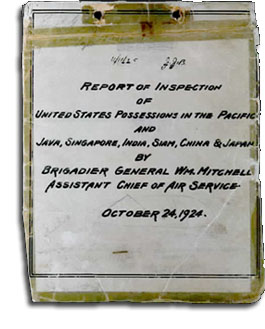| Prelude
to War Flying Tigers The U.S.S. Reuben James |
![]()
Although the Japanese attack at Pearl Harbor caught us off guard, not
all American military planners were surprised. As far back as the 1920s
some officers warned that the Japanese were to be our next enemy and that
an attack on our Navy at a place like Pearl Harbor was inevitable. In
1924, Army Brig. Gen. William Mitchell reported his opinions concerning
the Pacific Ocean area.
In his report he suggested how the Japanese might attack Pearl Harbor by air at 7:30 a.m. and that battleships would be particularly vulnerable to aerial attack. A 1927 Navy photograph of the U.S. fleet in Guantanamo Bay showed how the orderly formation of battleships was "good hunting" for airplanes.
In 1937, Navy Lt. Comdr. Logan Ramsey published an article that was the basis for a news editorial. He stated that battleships anchored in neat lines were ideal targets for attack by aircraft. He also concluded that our fleet would be attacked first in order to leave us defenseless against further attacks. Lieutenant Commander Ramsey gained fame later at Pearl Harbor when he broadcast the first alert on December 7th:
"AIR RAID PEARL HARBOR . . . This is no drill."
